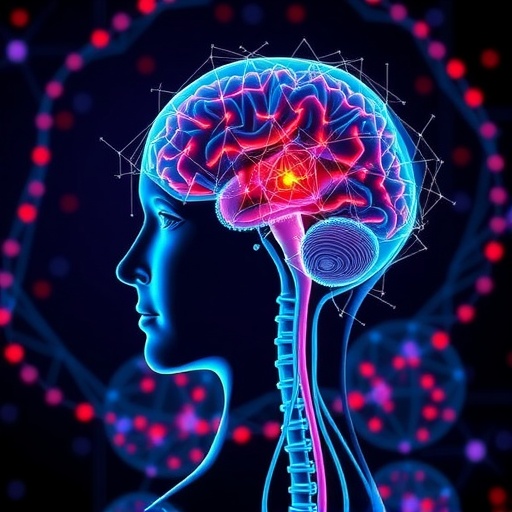In a groundbreaking advance poised to transform the diagnostic landscape of neurodegenerative diseases, researchers have unveiled an innovative approach to enhance the accuracy in distinguishing Parkinsonian disorders. This breakthrough methodology hinges on “metaphenomic annotation,” a sophisticated analytical framework that delves deeply into the vast clinicopathological literature to extract nuanced phenotypic signatures that characterize these complex diseases more precisely than ever before.
Parkinsonian disorders, encompassing Parkinson’s disease (PD), multiple system atrophy (MSA), and progressive supranuclear palsy (PSP), have long posed formidable challenges in clinical neurology due to overlapping symptomatology and pathological heterogeneity. Traditional diagnostic formulas, reliant heavily on clinical observation and post-mortem pathological confirmation, often yield ambiguous results during a patient’s lifetime. The latest research innovates by harnessing the power of metaphenomic data mining, which synthesizes high-dimensional phenotypic and molecular information to refine diagnostic classifiers.
At the core of this pioneering work is the integration and annotation of clinicopathological literature, which includes thousands of peer-reviewed case reports, cohort studies, and neuropathological examinations. By employing natural language processing and machine learning algorithms, the team parsed through complex datasets to create a comprehensive phenotypic map—what they term a “metaphenome”—representing intricate disease manifestations across multiple biological axes.
The newly developed metaphenomic annotation transcends binary symptom presence or absence by quantifying the intensity, progression dynamics, and co-occurrence patterns of phenotypic traits. This quantitative annotation is pivotal, as it permits nuanced comparisons between overlapping Parkinsonian syndromes, thus refining differential diagnosis which has remained elusive using conventional criteria. For example, specific motor and non-motor symptom clusters, when analyzed within metaphenomic frameworks, yield powerful discriminative features that redefine diagnostic boundaries.
One exciting aspect of this research is the methodological synergy between advanced computational approaches and clinical neuroscience. The researchers utilized deep learning models trained on richly annotated textual and pathological data to predict disease categories with unprecedented accuracy. Such models demonstrated superior capability in distinguishing MSA from PD and PSP, conditions historically confounding to clinicians due to overlapping clinical courses and pathological hallmarks.
Furthermore, this work highlights the potential for metaphenomic annotation to facilitate earlier diagnosis, which is critical for therapeutic intervention and clinical trial stratification. By embedding temporal aspects of symptom onset and evolution into their models, the investigators could identify subtle early indicators that differentiate Parkinsonian disorders long before definitive pathology emerges, offering new avenues for pre-symptomatic diagnosis.
Importantly, this approach addresses the heterogeneity within patient cohorts by accommodating the biological and clinical variability observed in real-world populations. The annotated metaphenome acts as a multidimensional phenotype signature, capturing individual variation while preserving group-specific pathological links. This facilitates personalized medicine approaches where treatments and prognostication can be tailored based on refined phenotypic profiles.
The implications of this study extend beyond diagnosis. By providing a robust platform for disease classification grounded in comprehensive phenotypic data, it opens the door to reverse translational research—where clinicopathological patterns can be linked back to molecular mechanisms and genetic underpinnings. This feedback loop is invaluable for attracting new targets for therapeutic development and for designing more precise clinical trials that account for phenotypic heterogeneity.
Moreover, the team’s work exemplifies the growing trend of utilizing big data and artificial intelligence to tackle longstanding neurological enigmas. It underscores how interdisciplinary collaborations between clinicians, neurologists, bioinformaticians, and data scientists are accelerating discovery and clinical translation in the neurodegenerative field.
While the study represents a significant leap forward, the authors acknowledge the need for continued validation through prospective clinical trials and integration with biomarker studies such as neuroimaging and cerebrospinal fluid analyses. The convergence of metaphenomic annotation with these modalities could further refine diagnostic algorithms, leading to composite indices that outperform any single diagnostic tool.
This novel metaphenomic approach also holds promise for expanding into other neurodegenerative disorders beyond Parkinsonian syndromes. Diseases such as Alzheimer’s, amyotrophic lateral sclerosis (ALS), and frontotemporal dementia share similar diagnostic challenges, featuring overlapping clinical manifestations and heterogeneous pathological substrates. Leveraging metaphenomic frameworks across these disorders could revolutionize our understanding and clinical management on a wider scale.
In practical terms, adoption of this technology will likely require developing user-friendly software and database platforms accessible to clinicians and researchers worldwide. Integration within existing electronic health records combined with continuous updating of annotated phenotypic data will be paramount for real-world utility and sustainability.
Ethical considerations may emerge as this AI-enabled diagnostic paradigm gains traction, particularly regarding data privacy, informed consent, and the interpretation of probabilistic diagnostic outputs. Clear communication with patients and multidisciplinary stakeholder engagement will be vital to ensure responsible implementation.
As neurodegenerative diseases continue to impose a growing burden on aging populations globally, the urgency for precise diagnostic tools cannot be overstated. The metaphenomic annotation landmark study thus shines as a beacon, promising to fill critical gaps in our diagnostic arsenal and ultimately improve patient outcomes through timely, accurate, and personalized disease characterization.
In summary, this transformative research harnesses the convergence of computational power, deep phenotyping, and clinicopathological insight to redefine diagnostic boundaries in Parkinsonian disorders. It paves a visionary path toward a future where complex neurological diseases are unraveled at unprecedented resolution, unlocking precision medicine and enabling targeted interventions that can alter disease trajectories profoundly.
Subject of Research: Refining diagnostic accuracy in Parkinsonian disorders using advanced metaphenomic annotation techniques applied to clinicopathological literature.
Article Title: Refining the diagnostic accuracy of Parkinsonian disorders using metaphenomic annotation of the clinicopathological literature.
Article References:
Massey, Q., Nihoyannopoulos, L., Zeidman, P. et al. Refining the diagnostic accuracy of Parkinsonian disorders using metaphenomic annotation of the clinicopathological literature. npj Parkinsons Dis. 11, 314 (2025). https://doi.org/10.1038/s41531-025-01157-y
Image Credits: AI Generated




